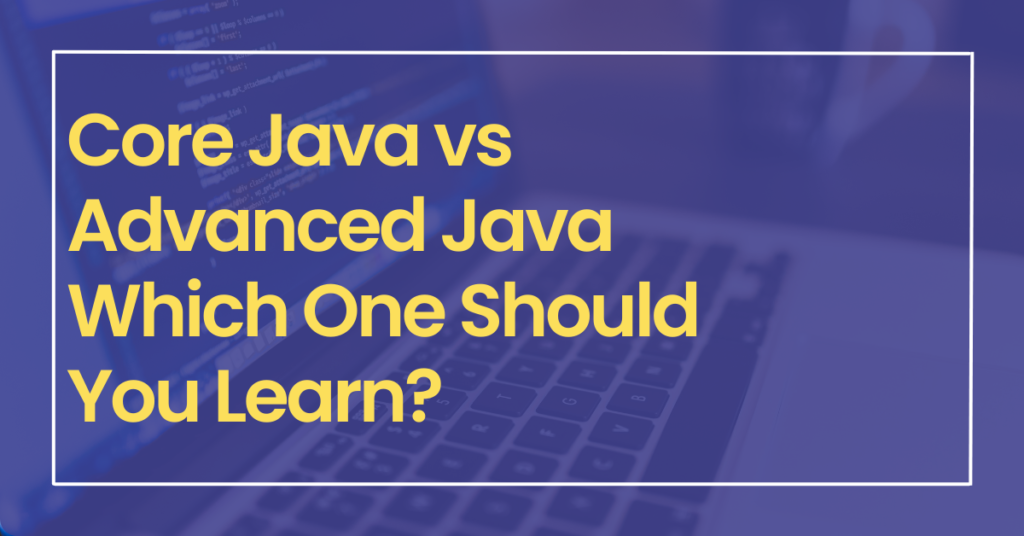
Are you intrigued by the world of Java programming? Whether you’re a budding developer or someone looking to expand their coding knowledge, understanding the distinction between Core Java and Advanced Java is important. In this article, we’ll break down the differences with simple explanations and examples, providing you with a clear roadmap in your Java journey.
Core Java: Building the Foundation
Core Java serves as the fundamental building block for Java programming. It consists of the basic concepts and features that lay the groundwork for more complex applications. Let’s delve into some key aspects:
Aspect | Core Java | Advanced Java |
| Data Types | Int, float, char, boolean, etc. | Extends core types with custom classes |
| OOP Principles | Encapsulation, inheritance, polymorphism, abstraction | Implements advanced patterns like Singleton |
| Operators | Arithmetic, relational, logical, etc. | Additional operators for bit manipulation |
| Exception Handling | Basic try-catch blocks | Advanced exception hierarchies |
| Swing | Basic UI components | Richer UI components and customizations |
| Threading | Basic thread management | Thread synchronization for complex scenarios |
| Collections | Simple data structures like arrays | Advanced collections like HashMap, LinkedList |
Advanced Java: Taking the Leap
Once you’ve grasped Core Java, Advanced Java steps in to elevate your programming expertise. It dives into more intricate concepts and empowers you to create sophisticated applications. Let’s explore:
| Aspect | Advanced Java | Core Java |
| Web Services | RESTful APIs, SOAP, data exchange | —– |
| Database Connectivity | JDBC for basic connections | ORM frameworks like Hibernate for streamlined DB access |
| JSP and Servlets | Dynamic web content and request handling | Basic HTML creation with minimal dynamic features |
| EJB | Enterprise JavaBeans for large-scale applications | —— |
Putting It All Together
Imagine you’re building a car dealership application. You’d start with Core Java to lay the groundwork, using data types to represent car details. Object-oriented principles help model cars as objects with properties and behaviors. If a car model is unavailable, exceptions could be handled using try-catch blocks. The UI for listing cars could be created using Swing, and threading might ensure smooth performance.
But as your dealership grows, Advanced Java comes into play. You might employ web services to fetch car availability via APIs. Database connectivity becomes crucial to manage inventory, utilizing JDBC or ORM frameworks. For the website, JSP and Servlets dynamically display car information based on user requests. And if your dealership expands even further, EJB provides the scalability and maintainability needed.
Empowering Your Java Journey
Whether you’re starting your Java journey or seeking to master advanced concepts, we’re here for you. Our Java courses cover both Core Java and Advanced Java, equipping you with the skills needed to thrive in the programming world. Join us, and let’s explore the realm of Java together!
Conclusion:
In conclusion, Core Java sets the foundation with basic concepts, while Advanced Java builds upon it with intricate features necessary for more complex applications. As you progress, remember that both Core and Advanced Java have their roles, and understanding when to employ each is key to becoming a proficient Java developer. So, why wait? Embark on your Java journey today with our comprehensive Advanced Java courses.
